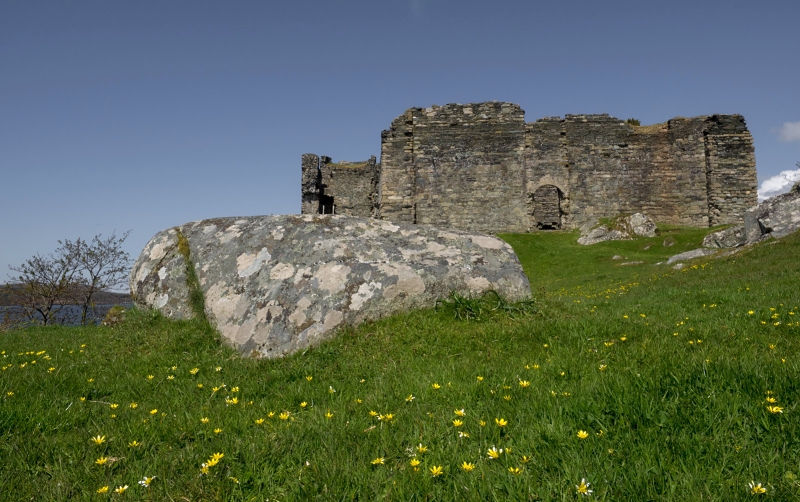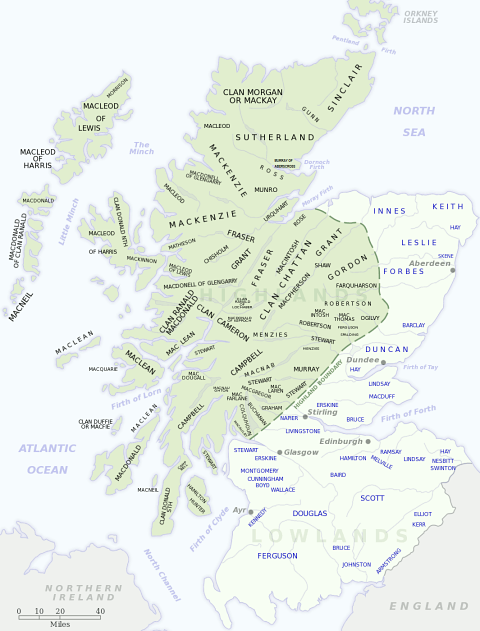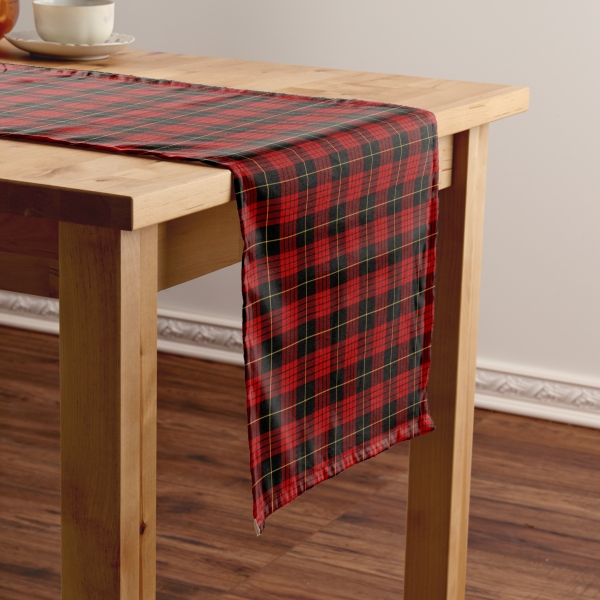
Motto: Constant and faithful
Historic Seat: Castle Sween
District: Hebrides, Argyll
Associated Surnames: MacCunn, MacSwan, MacSweeney, McSwain, Swann, Swain
Associated Tartans:
Early MacQueen Genealogy and History:
(Excerpt from "The Scottish Clans and Their Tartans", James Grant, 1906)
Roderick Dhu Revan MacSweyn or MacQueen is said to be the founder of this clan, who, about the beginning of the fifteenth century, received a grant of territory in the county of Inverness, Corrybrough being the name of the property. MacQueen belonged to the family of the Lord of the Isles, and his descendants from him were called the Clan Revan.
The MacQueens fought under the standard of MacIntosh, captain of the Clan Chattan,1 at the battle of Harlaw2 in 1411. On the 4th April 1609, Donald MacQueen of Corrybrough signed the bond of Manrent,3 with the chiefs of the other tribes composing the Clan Chattan, whereby they bound themselves to support Angus MacIntosh of that Ilk as their captain and leader.
At this period it is said that the clan of MacQueen included twelve distinct families, all landlords in the counties of Inverness and Nairn. The MacQueens were acknowledged to have been of MacDonald origin, although they ranged themselves among the tribes of the Clan Chattan.
(End excerpt)
Next page: Clan MacRae
Footnotes:
1 Clan Chattan: Clan Chattan is a unique Highland clan confederation whose past and present members include Clan Davidson, Farquharson, MacBean, MacGillivray, MacIntyre, Mackintosh, MacLean, MacPhail, MacPherson, MacQueen, MacThomas, and Shaw. Read more about Clan Chattan at Wikipedia.
2 The Battle of Harlaw (1431): The Battle of Harlaw was fought on 24 July 1411 just north of Inverurie in Aberdeenshire. It was fought between Highland forces under Donald of Islay, (MacDonald, Lord of the Isles), and a Lowland army led by Alexander Stewart, Earl of Mar, to resolve competing claims to the Earldom of Ross, a large region of northern Scotland. Read more about the Battle of Harlaw at Wikipedia.
3 Manrent: A Scottish contract of the mid-15th century to the early 17th century, usually military in nature and involving Scottish clans. The bond of manrent was commonly an instrument in which a weaker man or clan pledged to serve, in return for protection, a stronger lord or clan. Essentially, it was a promise by one person to serve another, such that he would be friend to all his friends, and foe to all his foes. Read more about Manrents at Wikipedia.

Distribution of Scottish clans and families
View larger map at Wikimedia Commons

Browse the Clan MacQueen Tartan Collection with home decor, personal accessories, crafting, paper products, and more.

Browse the Argyll District Tartan Collection with clothing, home decor, accessories, electronics cases, and more.